Freddie Mac 2014 Annual Report Download - page 13
Download and view the complete annual report
Please find page 13 of the 2014 Freddie Mac annual report below. You can navigate through the pages in the report by either clicking on the pages listed below, or by using the keyword search tool below to find specific information within the annual report.-
 1
1 -
 2
2 -
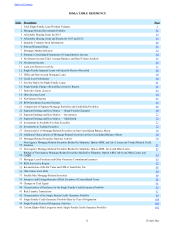 3
3 -
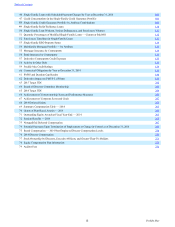 4
4 -
 5
5 -
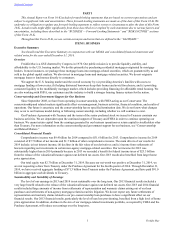 6
6 -
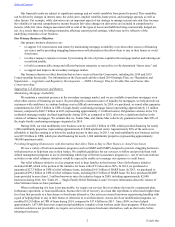 7
7 -
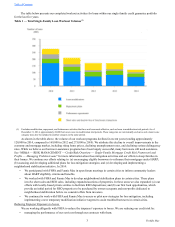 8
8 -
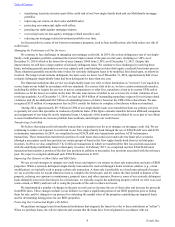 9
9 -
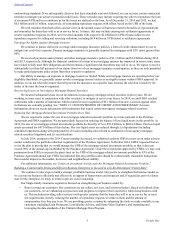 10
10 -
 11
11 -
 12
12 -
 13
13 -
 14
14 -
 15
15 -
 16
16 -
 17
17 -
 18
18 -
 19
19 -
 20
20 -
 21
21 -
 22
22 -
 23
23 -
 24
24 -
 25
25 -
 26
26 -
 27
27 -
 28
28 -
 29
29 -
 30
30 -
 31
31 -
 32
32 -
 33
33 -
 34
34 -
 35
35 -
 36
36 -
 37
37 -
 38
38 -
 39
39 -
 40
40 -
 41
41 -
 42
42 -
 43
43 -
 44
44 -
 45
45 -
 46
46 -
 47
47 -
 48
48 -
 49
49 -
 50
50 -
 51
51 -
 52
52 -
 53
53 -
 54
54 -
 55
55 -
 56
56 -
 57
57 -
 58
58 -
 59
59 -
 60
60 -
 61
61 -
 62
62 -
 63
63 -
 64
64 -
 65
65 -
 66
66 -
 67
67 -
 68
68 -
 69
69 -
 70
70 -
 71
71 -
 72
72 -
 73
73 -
 74
74 -
 75
75 -
 76
76 -
 77
77 -
 78
78 -
 79
79 -
 80
80 -
 81
81 -
 82
82 -
 83
83 -
 84
84 -
 85
85 -
 86
86 -
 87
87 -
 88
88 -
 89
89 -
 90
90 -
 91
91 -
 92
92 -
 93
93 -
 94
94 -
 95
95 -
 96
96 -
 97
97 -
 98
98 -
 99
99 -
 100
100 -
 101
101 -
 102
102 -
 103
103 -
 104
104 -
 105
105 -
 106
106 -
 107
107 -
 108
108 -
 109
109 -
 110
110 -
 111
111 -
 112
112 -
 113
113 -
 114
114 -
 115
115 -
 116
116 -
 117
117 -
 118
118 -
 119
119 -
 120
120 -
 121
121 -
 122
122 -
 123
123 -
 124
124 -
 125
125 -
 126
126 -
 127
127 -
 128
128 -
 129
129 -
 130
130 -
 131
131 -
 132
132 -
 133
133 -
 134
134 -
 135
135 -
 136
136 -
 137
137 -
 138
138 -
 139
139 -
 140
140 -
 141
141 -
 142
142 -
 143
143 -
 144
144 -
 145
145 -
 146
146 -
 147
147 -
 148
148 -
 149
149 -
 150
150 -
 151
151 -
 152
152 -
 153
153 -
 154
154 -
 155
155 -
 156
156 -
 157
157 -
 158
158 -
 159
159 -
 160
160 -
 161
161 -
 162
162 -
 163
163 -
 164
164 -
 165
165 -
 166
166 -
 167
167 -
 168
168 -
 169
169 -
 170
170 -
 171
171 -
 172
172 -
 173
173 -
 174
174 -
 175
175 -
 176
176 -
 177
177 -
 178
178 -
 179
179 -
 180
180 -
 181
181 -
 182
182 -
 183
183 -
 184
184 -
 185
185 -
 186
186 -
 187
187 -
 188
188 -
 189
189 -
 190
190 -
 191
191 -
 192
192 -
 193
193 -
 194
194 -
 195
195 -
 196
196 -
 197
197 -
 198
198 -
 199
199 -
 200
200 -
 201
201 -
 202
202 -
 203
203 -
 204
204 -
 205
205 -
 206
206 -
 207
207 -
 208
208 -
 209
209 -
 210
210 -
 211
211 -
 212
212 -
 213
213 -
 214
214 -
 215
215 -
 216
216 -
 217
217 -
 218
218 -
 219
219 -
 220
220 -
 221
221 -
 222
222 -
 223
223 -
 224
224 -
 225
225 -
 226
226 -
 227
227 -
 228
228 -
 229
229 -
 230
230 -
 231
231 -
 232
232 -
 233
233 -
 234
234 -
 235
235 -
 236
236 -
 237
237 -
 238
238 -
 239
239 -
 240
240 -
 241
241 -
 242
242 -
 243
243 -
 244
244 -
 245
245 -
 246
246 -
 247
247 -
 248
248 -
 249
249 -
 250
250 -
 251
251 -
 252
252 -
 253
253 -
 254
254 -
 255
255 -
 256
256 -
 257
257 -
 258
258 -
 259
259 -
 260
260 -
 261
261 -
 262
262 -
 263
263 -
 264
264 -
 265
265 -
 266
266 -
 267
267 -
 268
268 -
 269
269 -
 270
270 -
 271
271 -
 272
272 -
 273
273 -
 274
274 -
 275
275 -
 276
276 -
 277
277 -
 278
278 -
 279
279 -
 280
280 -
 281
281 -
 282
282 -
 283
283 -
 284
284 -
 285
285 -
 286
286 -
 287
287 -
 288
288 -
 289
289 -
 290
290 -
 291
291 -
 292
292 -
 293
293 -
 294
294 -
 295
295 -
 296
296 -
 297
297 -
 298
298 -
 299
299 -
 300
300 -
 301
301 -
 302
302 -
 303
303 -
 304
304 -
 305
305 -
 306
306 -
 307
307 -
 308
308 -
 309
309 -
 310
310 -
 311
311 -
 312
312 -
 313
313 -
 314
314 -
 315
315 -
 316
316 -
 317
317 -
 318
318 -
 319
319 -
 320
320 -
 321
321 -
 322
322 -
 323
323 -
 324
324 -
 325
325 -
 326
326 -
 327
327 -
 328
328 -
 329
329 -
 330
330
 |
 |

8Freddie Mac
certain “high-cost” areas (currently, up to $625,500 for a one-family residence). Higher limits also apply to two- to four-family
residences and to mortgages secured by properties in Alaska, Guam, Hawaii, and the U.S. Virgin Islands.
Our charter permits us to purchase first-lien single-family mortgages with LTV ratios at the time of our purchase of less
than or equal to 80%. Our charter also permits us to purchase first-lien single-family mortgages that do not meet this criterion if
we have one of the following credit protections:
• mortgage insurance on the portion of the UPB of the mortgage that exceeds 80%;
• a seller’s agreement to repurchase or replace any mortgage that has defaulted; or
• retention by the seller of at least a 10% participation interest in the mortgage.
This charter requirement does not apply to multifamily mortgages or to mortgages that have the benefit of any guarantee,
insurance or other obligation by the U.S. or any of its agencies or instrumentalities (e.g., the FHA, the VA or the USDA Rural
Development). Additionally, as part of HARP, we purchase single-family mortgages that refinance mortgages we currently own
or guarantee without obtaining additional credit enhancement in excess of that already in place for any such loan, even when
the LTV ratio of the new loan is above 80%.
Overview of the Mortgage Securitization and Guarantee Process
Mortgage securitization is an integral part of our business activities. Mortgage securitization is a process where we
purchase mortgage loans that lenders originate, and then pool these loans into mortgage-related securities that can be sold in
global capital markets. Our primary single-family mortgage securitization and guarantee process involves the issuance of
single-class PCs and our primary multifamily mortgage securitization and guarantee process involves the issuance of K
Certificates. We also resecuritize mortgage-related securities that are issued by us, other GSEs, HFAs, or private (non-agency)
entities, and issue other single-class and multiclass mortgage-related securities to third-party investors.
The following diagram illustrates how we support mortgage market liquidity when we create PCs through mortgage
securitizations. PCs can be sold to investors or held by us or our lender customers.
Mortgage Securitizations
For single-family loans, our securitization and guarantee process generally works as follows: (a) a lender originates a
mortgage loan to a borrower purchasing a home or refinancing an existing mortgage loan; (b) we purchase the loan from the
lender and place it with other mortgages into a security (this process is referred to as “pooling”); (c) we provide a credit
guarantee (for a fee) to those who invest in the security; (d) the borrower’s monthly payment of mortgage principal and interest
(net of a servicing fee and our management and guarantee fee) is passed through to the investors; and (e) if the borrower stops
making monthly payments, we make the applicable payments to the investors pursuant to our guarantee.
The terms of single-family mortgage loans that we purchase allow borrowers to prepay them, thereby allowing borrowers
to refinance their loans. Because of the nature of long-term, fixed-rate mortgage loans, borrowers with these loans are protected
against rising interest rates, but are able to take advantage of declining rates through refinancing. When a borrower prepays a
mortgage loan that we have securitized, the outstanding balance of the security owned by investors is reduced by the amount of
the prepayment.
We issue mortgage-related securities in the form of PCs, REMICs and Other Structured Securities, and Other Guarantee
Transactions. Each of these types of mortgage-related securities is discussed below.
Table of Contents
